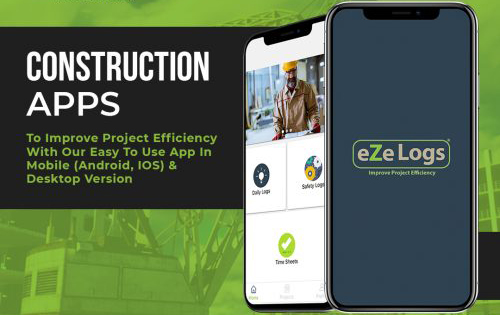Every construction project relies on Rfi submittals to keep everyone on the same page. This manual will take contractors step-by-step through the Rfi submittals process and provide examples, so they know what to anticipate.
Scheduling The Submission Procedure
The Rfi submittals design team creates technical requirements for the materials and equipment to be utilised in the project at many points before the ground is broken. In Rfi submittals, A list of all items that need to be submitted for building permits is maintained. The architect, engineer, contractor, and owner (or their agent) sits together before construction begins to establish the following:
- Items that need to be submitted during construction
- Timing constraints on submissions
- Submittal Method
- Assessment of Submissions
- Inspecting by due dates
Coordination of Information and Messages
In Rfi submittals system, a process for submittals should be outlined to avoid confusion about who is responsible for what. Dates are met because everyone knows what is expected of them, and mistakes are avoided through well-thought-out communication channels. The contractor is responsible for carrying it out as soon as the submission process is spelt out.

The submission timeline comes first on the list of things to do. Shop drawings, product samples, and technical data and specifications from the manufacturer are all common components.
The contractor’s timeline has to account for the time it takes to source and install each component. In addition, submission and construction schedules must account for the time needed to examine submissions and rework those rejected by the design team.
Taking A Look At What’s Been Sent In
The Rfi submittals procedure serves as a basic check and balance to ensure that the information in the contract paperwork is transmitted appropriately across the team, from the architect to the different subs and suppliers.
In building, a proverb goes, “Measure twice, cut once.” Examining submittals establishes a routine that guarantees precision in all aspects of the project.
The supplier or fabricator initiates the submission process by creating the deliverable, which is then passed on to the installer, the subcontractor, the general contractor, and finally, the architect or engineer.
The Rfi submittals is evaluated at each stage for compliance with the terms of the contract and is either Rejected, Approved, or Approved with Revisions depending on the results.
If the submission is turned down, the whole procedure must begin again. However, a preparer usually does not have to start from scratch if an offer is accepted with amendments. Instead, they either go on in the manner shown, or they can start the work and later include the requested revisions as detailed on the returned submission.
After final review and approval, the submission is returned to the contractor, and construction may continue. The construction contract documentation should detail the submission procedure for each project.
Review Rfi submittals By The Design Team
Designers and architects have the authority to accept or reject proposals for a project. However, their function in the review process is limited to ensuring that everything is in line with the contract terms and the design concept. Still, they do not have any say in the specific construction methods, techniques, or safety problems that arise because of the construction.
However, assessments by an objective third party, such as a design team, may help ensure that the owner’s original vision is realised and that the building performs as intended. In addition, a review might span many departments and go through multiple iterations.
The Rfi submittals design team will reject shop drawings, product samples, or other construction submittals that reveal a departure from the construction documents or permit set without an explanation. The design team reviews the submission after it has been revised by the subcontractor and reviewed by the contractor.
Once approved by the design team, all construction Rfi submittals must be included in the project, with the contractor bearing ultimate responsibility for the item’s quality. This set of safeguards aims to protect the property and keep the architect’s original vision intact.
What Construction Rfi submittals Are Not: Substitution Requests or Change Orders
Rfi submittals contactor use reasonable software like Ezelogs. If a required item is unavailable, but a reasonable substitute exists, the responsible subcontractor must submit a Substitution Request for approval. Substitution Requests may also be used to get support for functionally equivalent but less expensive or faster alternatives to the originally requested item.
Similarly, the project’s scope, cost, or timeline will not alter if the design team gives their stamp of approval. The contractor must request a Change Order if the proposed modification would impact any of these conditions.
Having A Place To Submit Work And Request Payment Keeps Things Going Forward
It is crucial to have concrete evidence of agreement on a building site, which is what submittals are meant to provide. They maintain open communication and ensure everyone is held to high standards. Each party must affix a stamp indicating that they have read the design, understand it, and agree to it before any work can begin on their assigned piece.
There will always be some who want to free themselves from this duty. The term “accepted” is occasionally substituted for “approved” on submission stamps used by architects and contractors.
It is standard practice for contracts to state that one party’s evaluation of the other’s submittals is a “courtesy” that does not release the other from compliance obligations. Even general contractors may attempt this on their subcontractors.
But in the end, we’re all in it together, and the rewards (and punishments) are distributed evenly. So everyone can do their part to keep the work (and the money) going forward if they have a firm grasp on the process and treat it with the seriousness it deserves.
How Can You Streamline the Application Process?
Documents might be lost or delayed when construction teams depend on paper trails, email, or spreadsheets for submission. In addition, when projects fall behind schedule, it causes disruptions in the timetable and may affect the budget if the due date is missed.
Submittals and rfi can be made more streamlined with the help of a digital construction management system like e-Builder Enterprise, which keeps all communication in one place and makes the document’s location visible to all parties involved. This eliminates confusion about who has seen the record and where it stands in the review process.
Another way a digital platform might help minimise expenses is by automating and standardising processes previously performed by hand. For example, upon completing a $1.9 billion segment of a new line, one rail transportation agency got two containers full of paper plans and papers. This meant that over two years, the agency hired a team of 20 to 25 employees whose primary responsibility was to take these drawings and digitise them. The takeaway is that the design teams were doomed to a paper hell since their contracts did not mandate digital document submission.
Conclusion
Because of adopting digital project management and switching to an automated system for handling submittals for dummie, you may anticipate a process that is effectively routed and consistently produces increased productivity.


